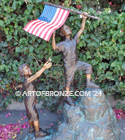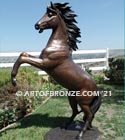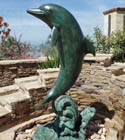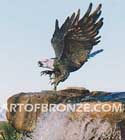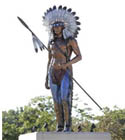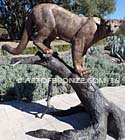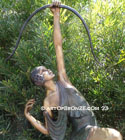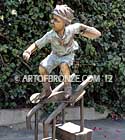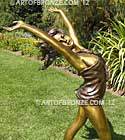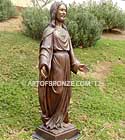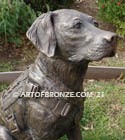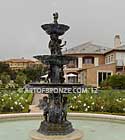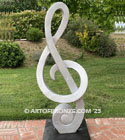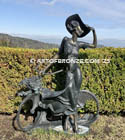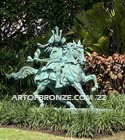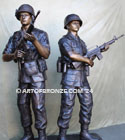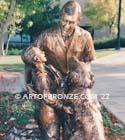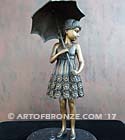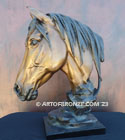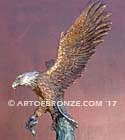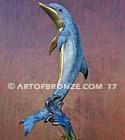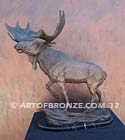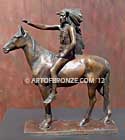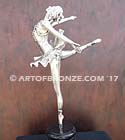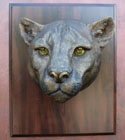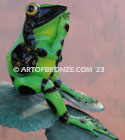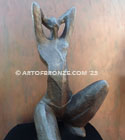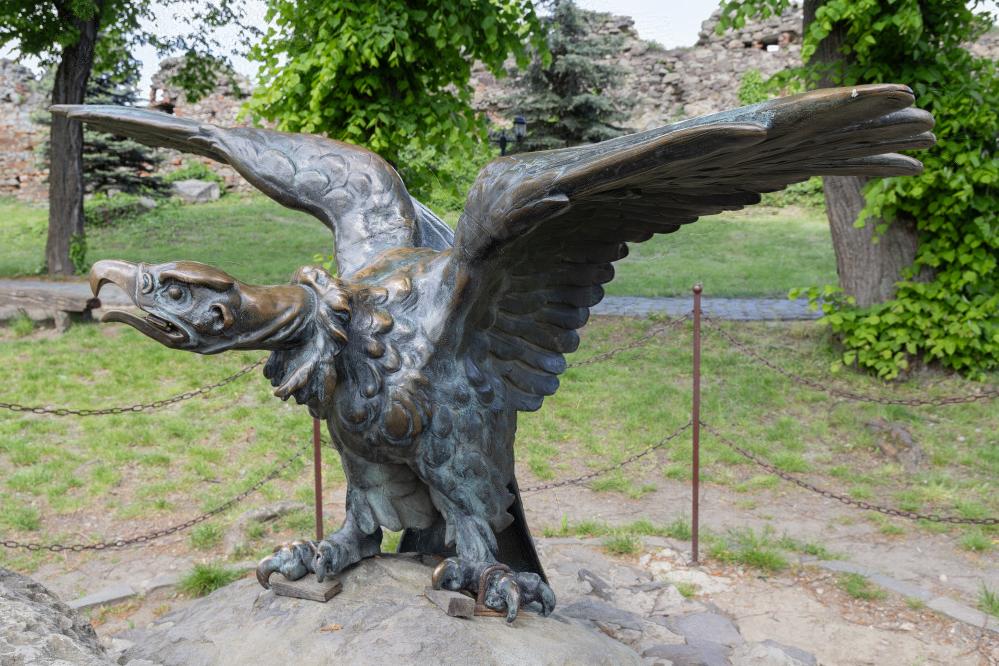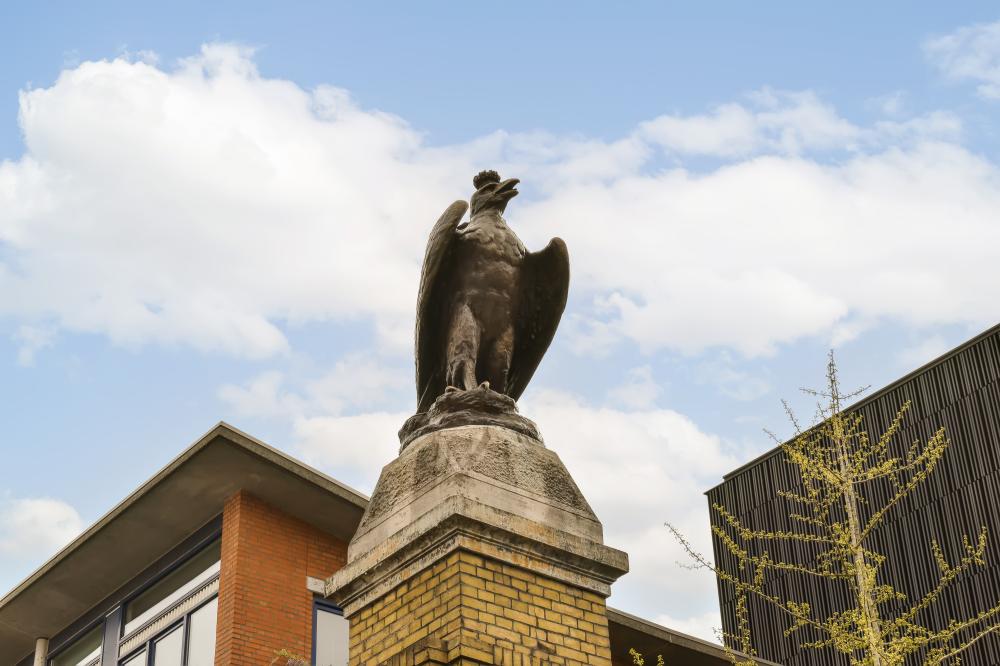The History and Cultural Significance of Bronze Eagle Statues
Bronze eagle statues have long held a place of honor in various cultures around the world. The eagle, a symbol of strength, courage, and freedom, is revered in many societies. The creation of bronze sculptures dates back thousands of years, with ancient civilizations such as the Greeks and Romans mastering the art of bronze casting. As an artist at Art of Bronze, I’ve often felt a deep connection to the past when working on eagle sculptures, knowing that I’m continuing a tradition steeped in history.
Throughout the ages, bronze eagle statues have been used as monuments in public spaces and commemorative gifts, especially in military contexts. In the United States, the bald eagle is an emblem of national pride and patriotism. It’s not uncommon to find these statues gracing government buildings, parks, and memorial sites.
At Art of Bronze, we’ve been involved in numerous projects where the bronze eagle statue serves as a symbol of tribute and remembrance. One particularly memorable project was for a veteran’s memorial, where the client sought a piece that encapsulated both the valor and sacrifice of service members. The resulting statue was not just a testament to the individual’s achievements but also a narrative of resilience and hope.
How Are Bronze Eagle Statues Created?
The creation of a bronze eagle statue is a meticulous process that requires skill and attention to detail. It all begins with the conceptualization phase, where our skilled artists work with clients to bring their vision to life. Inspiration can come from various sources–personal anecdotes, historical events, or even specific poses that convey the essence of the eagle’s majesty.
Once a design is agreed upon, our sculptors create a clay model. This model is critical as it serves as the blueprint for the final bronze piece. At Art of Bronze, we emphasize precision and craftsmanship, ensuring every feather and expression is captured perfectly. The next step involves creating molds from the clay model, usually made of silicone or latex for flexibility.
The bronze casting itself is an art form. Known as the lost-wax process, molten bronze is poured into these molds. Once cooled, the mold is broken away, revealing the rough bronze form. This is followed by meticulous finishing work, including chasing, a technique where the bronze surface is refined, and any imperfections are corrected. The final touch is patination, where various chemicals are applied to the bronze to achieve the desired color and texture.
Working on these statues has been a journey of learning. The sheer complexity of the process means that each statue is unique, holding its own story within layers of bronze. As a professional with over two decades of experience, I find great joy in seeing the transformation from a lump of clay to a powerful bronze eagle statue.
Where Are Bronze Eagle Statues Commonly Found?
Bronze eagle statues are versatile in their placement, fitting beautifully in both indoor and outdoor settings. In public spaces, they often serve as focal points in gardens, plazas, or as part of larger memorial complexes. Their presence commands attention, and they naturally become gathering points for reflection and appreciation.
In private estates, bronze eagle statues can be striking landscape features. Clients often choose specific locations to maximize the aesthetic and emotional impact–perhaps overlooking a garden or positioned at the entrance to a property. Indoors, smaller statues can complement a collection of art pieces, adding sophistication and depth to a room’s decor.
- Government buildings
- Military memorials
- Corporate headquarters
- Private gardens
- Art installations
Working at Art of Bronze, I’ve participated in installations that range from grand city squares to intimate home gardens. Each installation requires careful planning and consideration of factors like lighting, background, and overall harmony with the surroundings. With each bronze eagle statue, there’s a unique opportunity to enhance and elevate the environment it inhabits.
How Do You Maintain a Bronze Eagle Statue?
Maintaining a bronze eagle statue requires regular care to preserve its beauty and structural integrity. Bronze, while durable, is susceptible to patina changes and weathering if not correctly maintained. Here’s a simple process to keep your statue in prime condition:
- Regular Dusting: Use a soft cloth to dust the statue weekly. This prevents dirt buildup, which can lead to corrosion over time.
- Gentle Washing: Every few months, wash the statue with mild soap and water. Avoid harsh chemicals that can strip the patina.
- Waxing: Applying a specialized wax can protect the bronze surface. This step should be done twice a year, especially for outdoor statues exposed to varying weather conditions.
- Inspection: Regularly inspect the statue for any signs of damage or corrosion. Early detection can prevent more significant issues down the line.
Having worked on the restoration of several bronze pieces, I can attest that regular maintenance is key to longevity. At Art of Bronze, we offer consultation services to help clients understand the best care practices for their pieces.
What Should You Consider When Choosing a Bronze Eagle Statue?
Choosing the right bronze eagle statue involves several considerations to ensure it aligns with your vision and needs. First, think about the *purpose* of the statue. Is it for a public memorial or a private collection? This will influence factors like size, style, and placement.
Next, consider the *artistic style* that resonates with you. Do you prefer a realistic depiction, or are you drawn to abstract interpretations? At Art of Bronze, we encourage clients to explore a wide array of styles, ensuring they find the perfect match for their aesthetic preferences.
The *budget* is also a critical factor. Custom pieces can vary significantly in price, depending on size, complexity, and artist reputation. Always communicate your budget constraints clearly with the artists or consultants involved in the project.
Finally, think about the *legacy* you wish to leave with the statue. A bronze eagle statue can be more than just art; it can be a lasting symbol of your values or tribute to a significant person or event.
